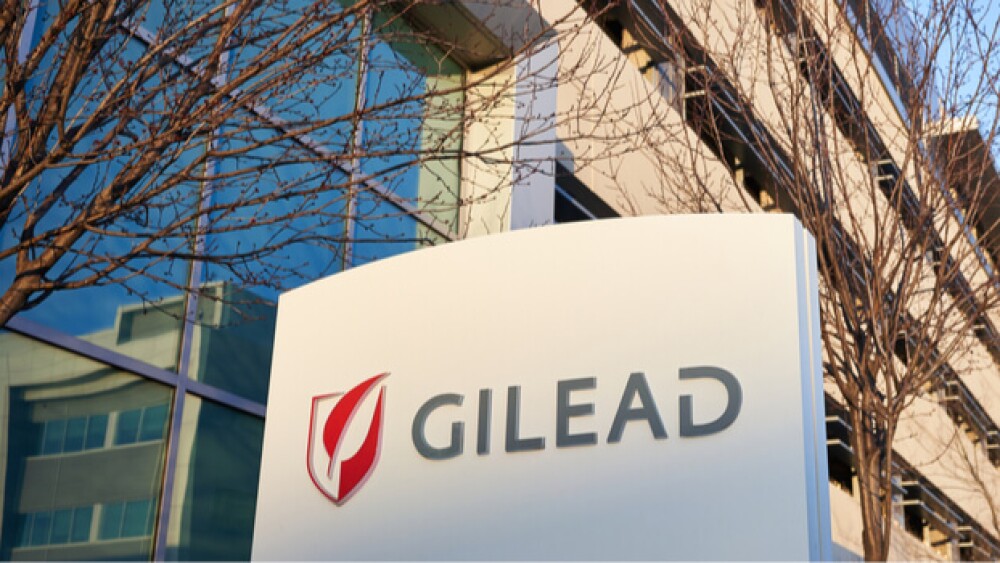Gilead Sciences and Novo Nordisk presented data from a Phase II proof-of-concept clinical trial of semaglutide in combinations with cilofexor and/or firsocostat in non-alcoholic steatohepatitis.
Tada Images/Shutterstock
Gilead Sciences and Novo Nordisk presented data from a Phase II proof-of-concept clinical trial of semaglutide in combinations with cilofexor and/or firsocostat in non-alcoholic steatohepatitis (NASH). They presented the results at The Liver Meeting Digital Experience (TLMdX) over the weekend.
The trial had five arms that evaluated combinations of Novo Nordisk’s semaglutide, a GLP-1 receptor agonist with Gilead’s FXR agonist cilofexor and/or Gilead’s ACC inhibitor firsocostat over 24 weeks. They were tested in 108 patients with NASH. NASH is a liver disease that can lead to cirrhosis, but occurs in people with little or no alcohol intake.
The trial hit its primary endpoint. It demonstrated that in people with NASH and mild to moderate fibrosis, all combinations were well tolerated. The most common side effects were gastrointestinal. Minimal itching was seen in people receiving cilofexor. In all the groups, 5 to 14% of participants discontinued any trial because of adverse events (AE).
There were also exploratory endpoints that evaluated biomarkers of liver health at 24 weeks in post-hoc analysis. These showed statistically significant improvements in hepatic steatosis, as measured by MRI proton density fat fraction (MRK-PDFF) and liver injury, as measured by serum alanine aminotransferase (ALT). This was in the combination arms compared to semaglutide alone.
The trials also evaluated liver stiffness using vibration-controlled transient elastography (VCTE) and enhanced liver fibrosis (ELF), showing a decline across all groups, but was not deemed statistically significant.
“These results offer novel insights around the multiple mechanisms that drive NASH and demonstrate the potential of combination approaches for patients in significant need of a treatment option for this condition,” said Naim Alkhouri, director of the Fatty Liver Program, chief of Transplant Hepatology, Arizona Liver Health, Chandler. “We are encouraged that these data showcase the potential for combination approaches to elicit improvements in liver fat content, liver biochemistry, and certain non-invasive tests for fibrosis, all of which have been associated with meaningful histologic improvement in NASH.”
Although the data was encouraging, the two companies did not clearly indicate what their future plans are for clinical development. Martin Holst Lange, senior vice president of global development for Novo Nordisk, said they are “carefully evaluating next steps based on a thorough assessment of data.”
Semaglutide is the active ingredient in Ozempic, Novo Nordisk’s weekly injection and its daily pill Rybelsus, both used to treat type 2 diabetes.
The NASH market has been a tough nut to crack. For quite some time, the leading company was thought to be Intercept Pharmaceuticals with its FXR agonist obeticholic acid, but the U.S. Food and Drug Administration (FDA) rejected the drug in July for that indication, arguing that its benefits did not outweigh the risks.
Gilead picked up frisocostat and cilofexor from Nimbus Therapeutics and Phenex Pharmaceuticals, respectively. It has another NASH drug in development, selonsertib, but has not showed conclusive data in late-stage trials.
Other companies reporting news regarding NASH include Genfit. After negative interim data from its Phase III RESOLVE-IT trial of elafibranor in NASH and fibrosis, back in May, France’s Genfit discontinued the trial in July. Now, as part of its half-year 2020 financial report, the company announced significant restructuring that will include cutting 40% of its staff.
The company will now focus on two priority areas. The first is the Phase III ELATIVE trial of elafibranor in primary biliary cholangitis (PBC), a chronic, autoimmune disease where bile ducts in the liver are gradually destroyed.
IniPharm raised $35 million in a Series A financing round. The company plans to use the funds to advance its lead program through Investigational New Drug (IND) filing and into clinical trials. IniPharm is focusing on fatty liver disease, cirrhosis and others, such as NASH.
Inventiva, headquartered in Daix, France, received Breakthrough Therapy designation from the U.S. Food and Drug Administration (FDA) for its Lanifibranor for NASH. The company also presented present the results from its 24-week Phase IIb trial of Lanifibranor for NASH in an oral plenary presentation at The Liver Meeting Digital Experience 2020. During that clinical trial, the drug met the primary endpoint, demonstrating a statistically significant reduction of the Steatosis Activity Fibrosis score (SAF). The SAF combines evaluations of hepatocellular inflammation and ballooning, with no worsening of fibrosis in the Intention To Treat (ITT1) and Per Protocol populations (PP2).
The drug achieved statistically significant effects on NASH resolution within fibrosis growing worse and fibrosis improving with no worsening of NASH. These are both primary endpoints relevant to the FDA and the European Medicine Agency (EMA) for accelerated approval during future Phase III clinical development.





